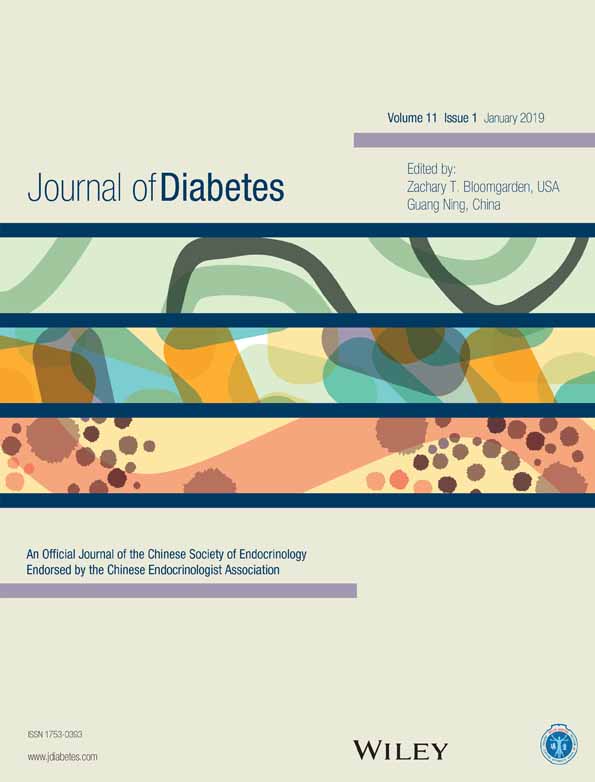Association between different types of comorbidity and disease burden in patients with diabetes†
糖尿病患者不同类型的共病与疾病负担之间的关系
Abstract
enBackground
This study examined the association between different types of comorbidities and the quality of diabetes care, health-related quality of life (HRQoL), and total health care expenditure.
Methods
Adult patients with diabetes were identified from the 2011 to 2013 Medical Expenditure Panel Survey, a nationally representative survey of the civilian non-institutionalized US population. Twenty different chronic conditions were captured and categorized as: (i) diabetes only; (ii) diabetes plus concordant (diabetes-related) comorbidity only; and (iii) diabetes plus one or more discordant (non-diabetes-related) comorbidities. Disease burden outcomes included the process of diabetes care (eye and foot examinations, HbA1c and cholesterol tests, influenza vaccination), HRQoL, and total health care expenditure. Multivariable models were used to examine associations between the type of comorbidity and outcomes.
Results
A sample of 8292 patients with diabetes was identified, of which 11.4% had diabetes only, 40.5% had concordant comorbidity only, and 48.1% reported one or more discordant comorbidities. Patients with diabetes and either type of comorbidity received better quality of diabetes care than those without a comorbidity. However, patients with discordant comorbidity showed significantly lower HRQoL measures and higher health care expenditure than those with concordant comorbidity. Adjusted total mean annual expenditure was US$4891, $6326, and $9210 for those with diabetes only and those with diabetes with one concordant or one discordant comorbidity, respectively.
Conclusions
Higher disease burden in patients with diabetes was associated with discordant rather than concordant comorbidity. Future interventional studies evaluating patient-centered care models addressing different types of comorbidity are necessary to better manage these complex patients.
Abstract
zh摘要
背景
这项研究调查了不同类型的共病、糖尿病医护质量、健康相关生活质量(health-related quality of life,HRQoL)以及总的卫生保健费用之间的关系。
方法
从2011至2013年医疗费用专项调查研究(Medical Expenditure Panel Survey)中筛选出成年糖尿病患者, 这是一项有代表性的针对美国16岁以上的平民人群 (其中不包括被囚于狱中、在养老院或精神病院、在现役武装部队的人口)的全国性调查研究。筛选了20种不同的慢性疾病并将其分类为:(i)只有糖尿病;(ii)糖尿病加只与糖尿病伴随(糖尿病相关)的共病;(iii)糖尿病加一种或者多种非糖尿病伴随(非糖尿病相关)的共病。疾病负担的结果包括糖尿病治疗的过程(眼睛与足部检查、HbA1c与胆固醇检测、流感疫苗接种)、HRQoL以及卫生保健总费用。使用多变量模型来调查共病类型与结果之间的关系。
结果
共筛选出了8292例糖尿病患者, 其中11.4%的患者只有糖尿病,40.5%的患者只合并与糖尿病相关的共病,48.1%的患者报告了一种或者多种非糖尿病相关的共病。与没有合并共病的患者相比, 糖尿病患者无论合并哪种类型的共病都会获得更好的糖尿病医护质量。然而, 与合并糖尿病相关共病的患者相比, 合并非糖尿病相关共病的患者HRQoL测量值显著更低, 并且卫生保健费用更高。对于只有糖尿病的患者、只合并有一种糖尿病相关共病的糖尿病患者、合并有一种非糖尿病相关共病的糖尿病患者来说, 校正后的平均每年总费用分别为4891美元、6326美元与9210美元。
结论
糖尿病患者的疾病负担较高, 它与非糖尿病相关共病而不是糖尿病相关共病相关。为了更好地管理这些复杂的患者, 未来我们需要进行干预研究, 评估以患者为中心的治疗模型, 以治疗不同类型的共病。




